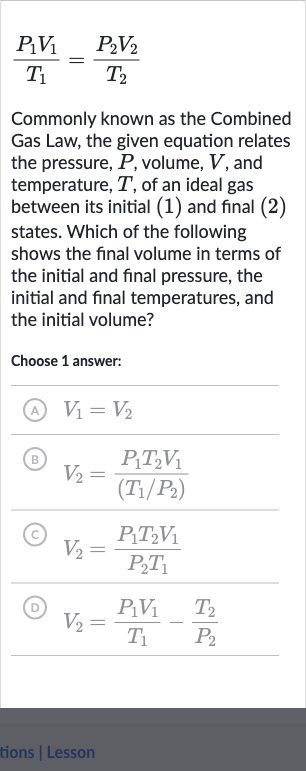AI tutor
Welcome to Bytelearn!
Let’s check out your problem:

Commonly known as the Combined Gas Law, the given equation relates the pressure, , volume, , and temperature, , of an ideal gas between its initial () and final () states. Which of the following shows the final volume in terms of the initial and final pressure, the initial and final temperatures, and the initial volume?Choose answer:(A) (B) (C) (D) tions | Lesson
Full solution
Q. Commonly known as the Combined Gas Law, the given equation relates the pressure, , volume, , and temperature, , of an ideal gas between its initial () and final () states. Which of the following shows the final volume in terms of the initial and final pressure, the initial and final temperatures, and the initial volume?Choose answer:(A) (B) (C) (D) tions | Lesson
- Multiply by : The Combined Gas Law is given by the equation . We need to solve for , the final volume.
- Multiply by T: First, we multiply both sides of the equation by to get rid of the denominator on the right side of the equation. This gives us .
- Divide by P: Next, we multiply both sides of the equation by to get rid of the denominator on the left side of the equation. This gives us .
- Divide by T: Now, we divide both sides of the equation by to isolate on one side of the equation. This gives us .
- Final Volume Calculation: Finally, we divide both sides of the equation by to solve for . This gives us .
